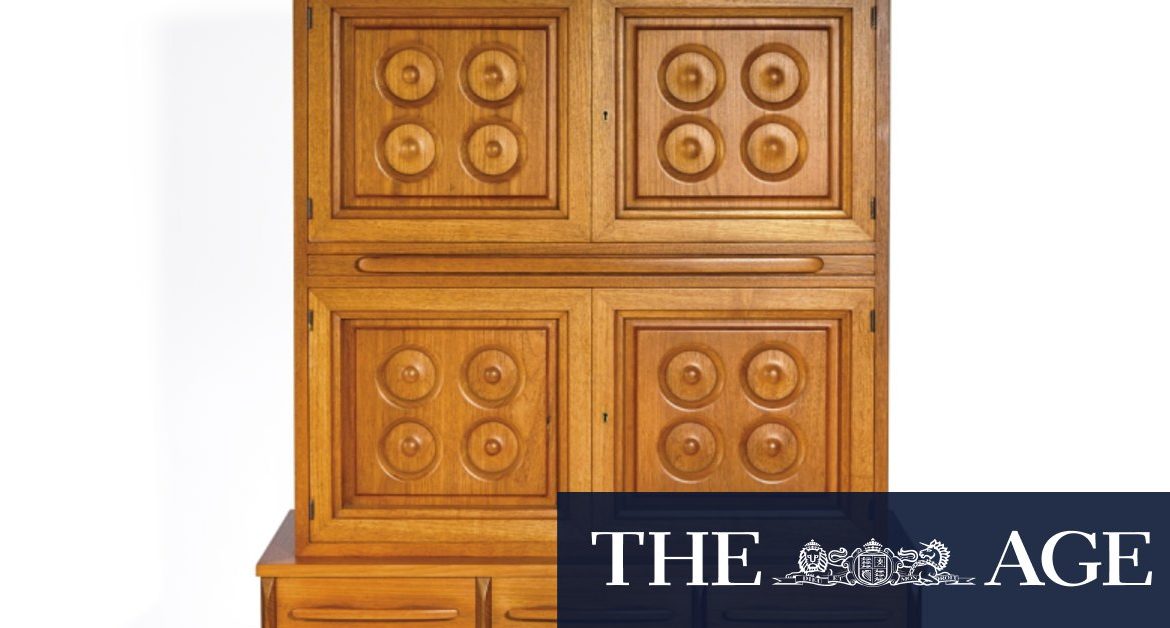Rosenblatt also enjoyed seeing Krimper’s furniture in his friends’ homes.
Some 25 years ago, a dining room suite he first coveted in a friend’s house turned up at auction. “I didn’t think about the money ($10,000). It was the fulfilment of a dream,” says Rosenblatt.
However, it was not until later that he first owned a Krimper piece, with his mother-in-law bequeathing an impressive sideboard setting that remains in pride-of-place in his Melbourne home.
Featuring a series of carved warriors, there is an African influence in the design.
The glass-top dining table that forms part of the setting reminds Rosenblatt of artist Clifford Last, who was a major influence on Krimper. “The undercroft (seen through the glass) is extremely sculptural,” says Rosenblatt, who also appreciates the leather straps used to support 10 dining chairs.
Also in Rosenblatt’s home is a room dedicated to Krimper that includes a desk, bookshelves and a sculpture believed to be inspired by bespoke keys made for many of the artist’s sideboards.
Although no longer in the family’s collection, Rosenblatt also once owned a Krimper dog kennel.
“You could say I’m obsessed by Krimper,” says Rosenblatt, who measures the pleasure of owning a Krimper piece not by the substantial money it is worth, but by the sublime craftsmanship.
Loading
Geoffrey Hatty, one of the top sellers of antique furniture in Melbourne from his Cremorne store, has been following the rise of post-war Australian furniture designers for decades. However, he has only been able to get his hands on one piece of Krimper – a small cocktail cabinet priced at about $14,000 – which he later sold to a regional art gallery.
When Hatty first started, no-one was interested in buying post-war furniture, particularly pieces such as a Sol Sapir cabinet designed in 1969 to commemorate man’s landing on the Moon.
“The beaten copper detailing that bridged the legs were evocative of the Moon’s surface, with all its craters,” says Hatty, who ended up selling the piece to a dealer in the Netherlands for $4000.
While Krimper pieces continue to attract some big prices, Hatty suggest potential buyers look at other significant designers, including Fred Ward (1930s-40s) and Zoureff (1960s-70s) as well as Lester Bunbury. “Some of these pieces can be purchased for between $6000 and $8000,” Hatty says.
Stephen Crafti is a specialist in contemporary design, including architecture, furniture, fashion and decorative arts.
Most Viewed in Money
Loading







